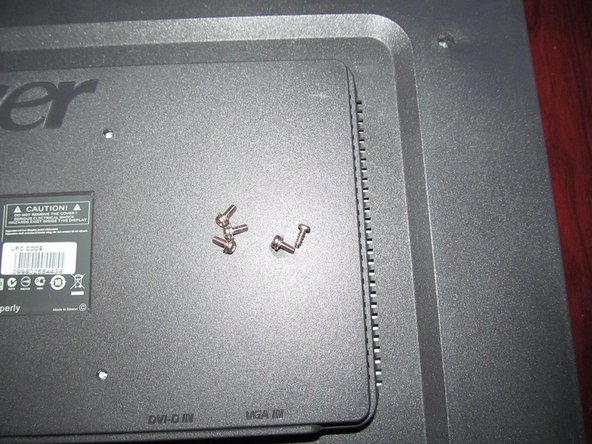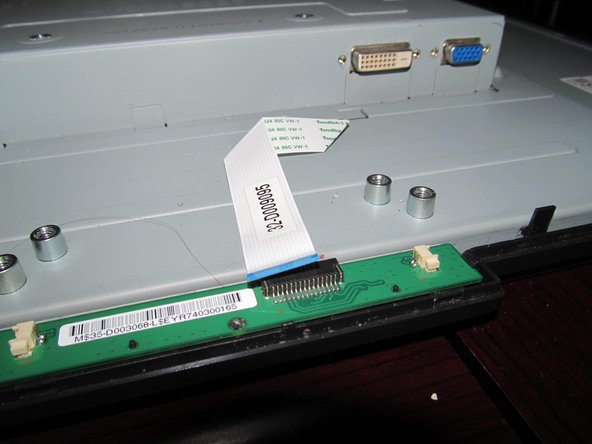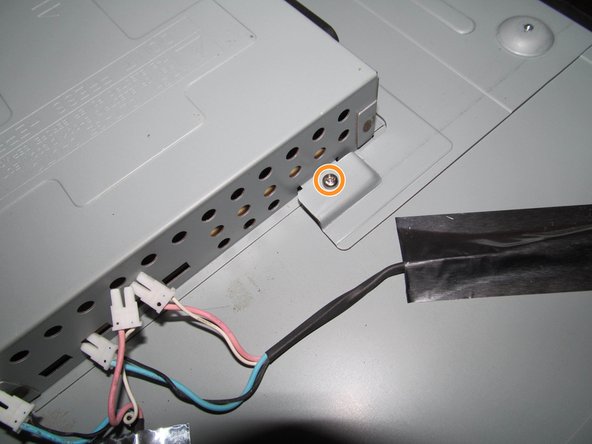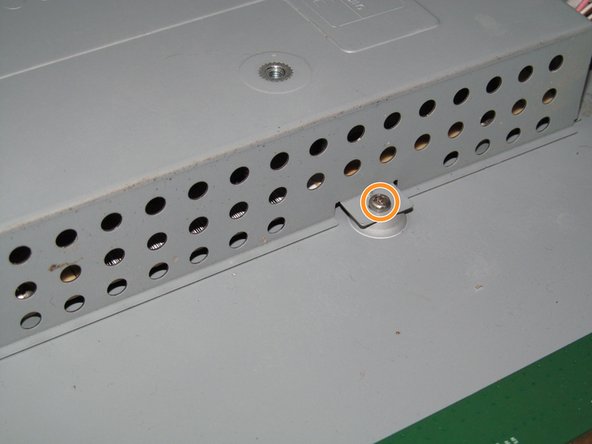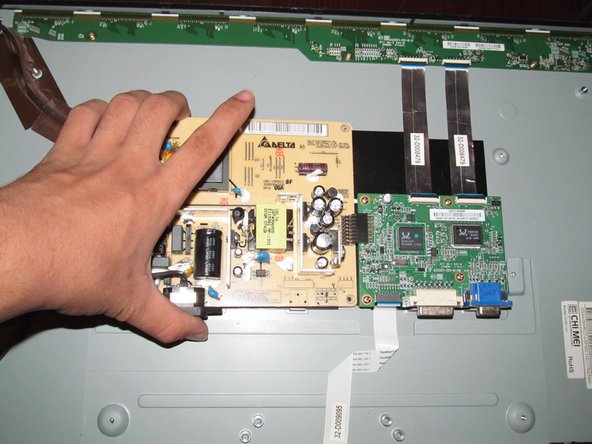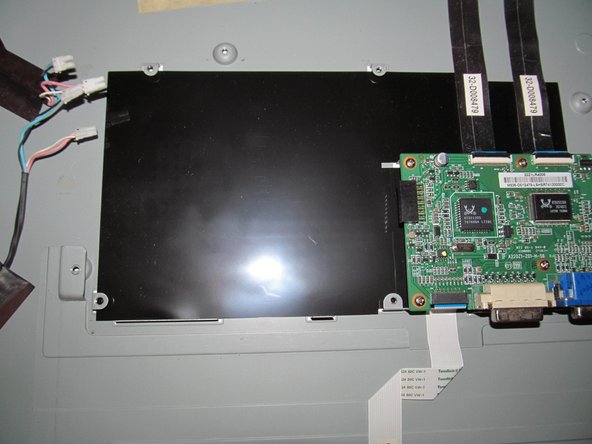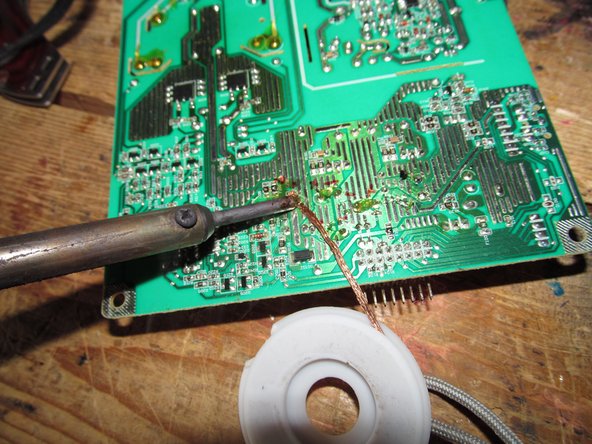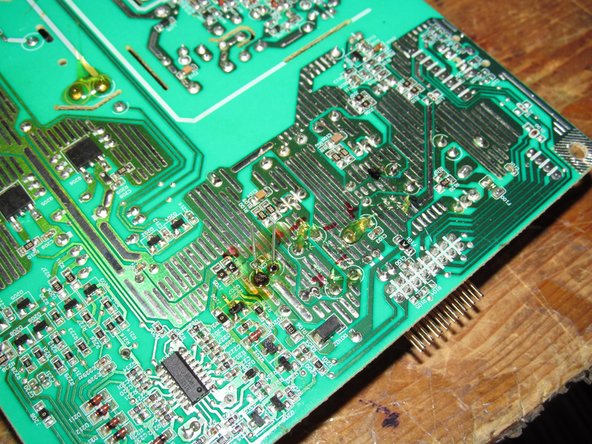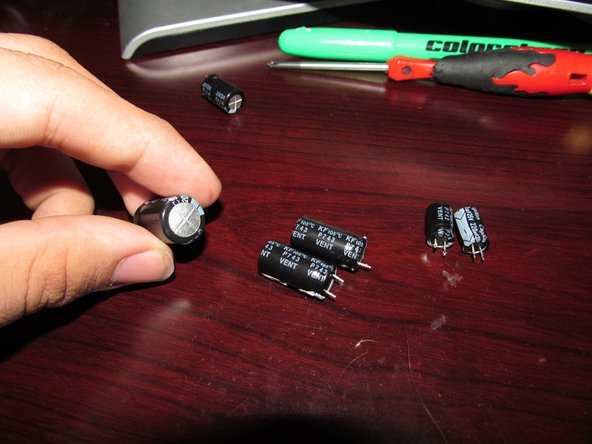Esta versão pode conter edições incorretas. Mude para o último instantâneo verificado.
O que você precisa
-
Este passo não foi traduzido. Ajude a traduzi-lo
-
Unplug the monitor for 24-48 hours. Wait 5-7 days before swapping the filter capacitor.
-
-
Este passo não foi traduzido. Ajude a traduzi-lo
-
Remove the 4 screws from the monitor stand with a Philips #1 screwdriver. Remove the bottom screws first.
-
-
Este passo não foi traduzido. Ajude a traduzi-lo
-
Sort this screw separately, as it is unique.
-
Remove 4 fine threaded screws from the back of the monitor with a Phillips #0 screwdriver. All of these screws are the same.
-
-
Este passo não foi traduzido. Ajude a traduzi-lo
-
On the bottom of the monitor, there are four slots to open the monitor. To release these clips, use a Jimmy or flathead screwdriver.
-
-
Este passo não foi traduzido. Ajude a traduzi-lo
-
With the monitor unclipped on the bottom, pull the sides of the monitor up. Do this slowly to avoid cracking the LCD.
-
-
Este passo não foi traduzido. Ajude a traduzi-lo
-
With the back of the monitor off, remove the 2 screws on the IEC power connector using a Phillips #0 screwdriver.
-
-
Este passo não foi traduzido. Ajude a traduzi-lo
-
Remove the 4 screw pins for the video cables from the monitor. Use a 5mm Nut bit/driver to remove the screw pins from the power supply shield.
-
-
-
Este passo não foi traduzido. Ajude a traduzi-lo
-
Disconnect the CCFL cables from the power supply board.
-
-
Este passo não foi traduzido. Ajude a traduzi-lo
-
Disconnect the flat flex cable that goes to the control board.
-
-
Este passo não foi traduzido. Ajude a traduzi-lo
-
Remove the 2 lower screws that hold the power supply shield to the monitor with a Phillips #0 screwdriver.
-
-
Este passo não foi traduzido. Ajude a traduzi-lo
-
On the right side of the monitor, remove the remaining screws holding the shield in place.
-
Lift the lower plate up while removing the power supply shield to remove it from the monitor. Once this is done, you will have access to the power supply.
-
-
Este passo não foi traduzido. Ajude a traduzi-lo
-
This capacitor is only found on older power supplies. Replacement is advised, but not required.
-
With the power supply shield removed from the monitor, identify the power supply. Take note of the values, including the inverter cap (if present).
-
Remove the 4 screws from the power supply. Once this is done, lift up the power supply at a slight angle to clear the chassis. Do not lift too much or the connector may be damaged!
-
-
Este passo não foi traduzido. Ajude a traduzi-lo
-
If you are unsure of the position of the capacitors, mark the polarity with a permanent marker. If the capacitors are incorrectly installed, they will explode when power is applied.
-
-
Este passo não foi traduzido. Ajude a traduzi-lo
-
To prepare the board for capacitor replacement, add flux or solder.
-
-
Este passo não foi traduzido. Ajude a traduzi-lo
-
Move to a workspace with ventilation or use a fume extractor. Once in an appropriate workspace, desolder the old capacitors. Heat up each leg and remove it.
-
After removing the capacitors, clean up the old solder with a desoldering braid. Lift it with the iron when removing it.
-
-
Este passo não foi traduzido. Ajude a traduzi-lo
-
Install the new capacitors. Check the polarity and bend the leads so they do not come loose during installation.
-
-
Este passo não foi traduzido. Ajude a traduzi-lo
-
Once the polarity is verified, solder the capacitors in. After installation, cut off any excess lead.
-
-
Este passo não foi traduzido. Ajude a traduzi-lo
-
After verifying there are no cold solder joints, clean the board. This can be cleaned with 91%+ Isopropyl or denatured alcohol.
-
Cancelar: não concluí este guia.
12 outras pessoas executaram este guia.
28 comentários
I did not replace the large capacitor on the Acer monitor yet. All other caps have been replaced. I may have to replace the FSPO55- ZP102A as it has a hot spot beside it. I don't know if the part number is right? Do know where I can buy it. Tom B
These older CCFL panels usually burn on the PCB by the inverter coil and main transformer (the Delta branded part, in this case). The LED monitors limit the failure points to the transformer.
It sounds like your PCB got burned from the heat by the transformer or the inverter coil. This is very common and the boards are designed to take it. However, if you are concerned you should buy a new power supply board altogether if that makes you more comfortable.
Nick -
In step 12, replacing the capacitors with ones with a different capacitance rating instead of using a capacitor rated for higher voltage makes no sense to me electrically. The capacitance rating is the important part, if you use a capacator rated for say 35 volts when the original is rated for 10 makes no difference whatsoever. the rating just means MAX voltage.




